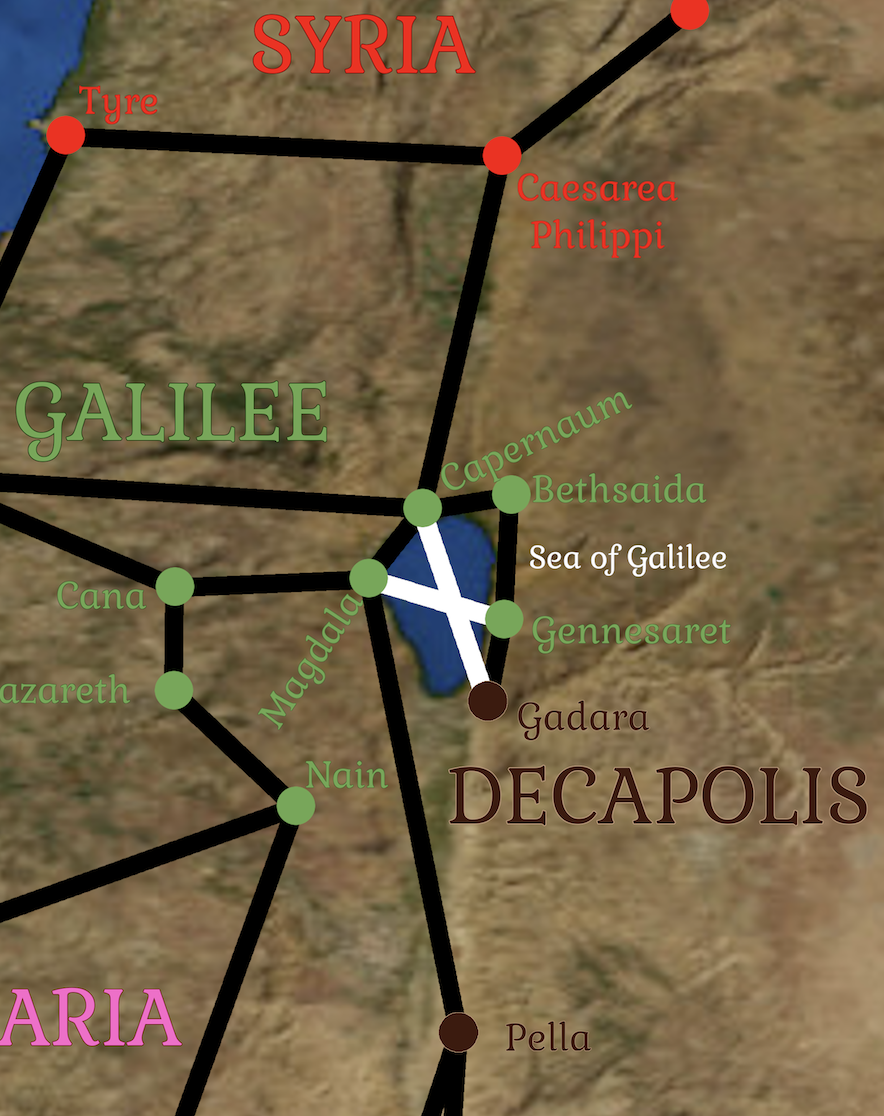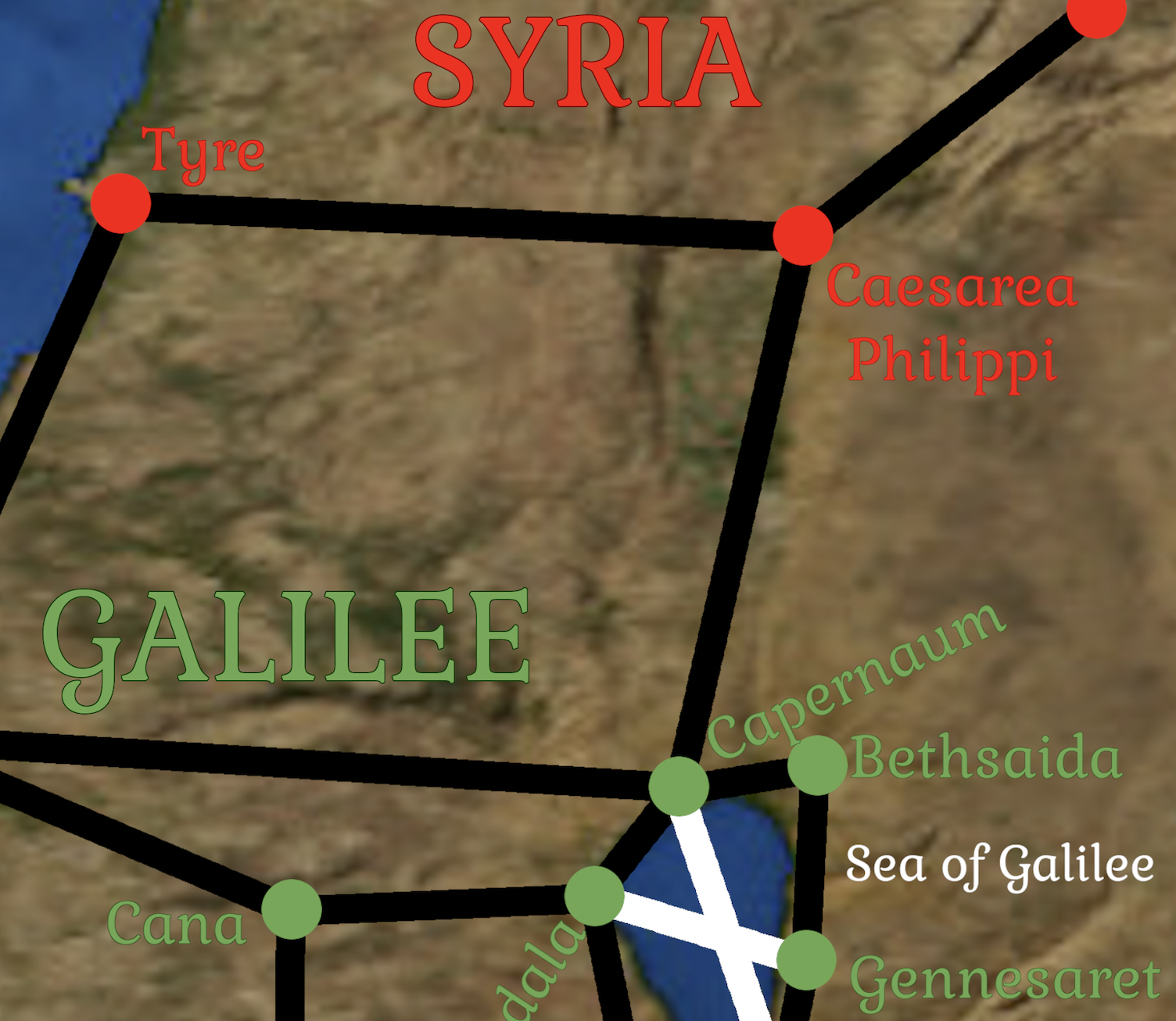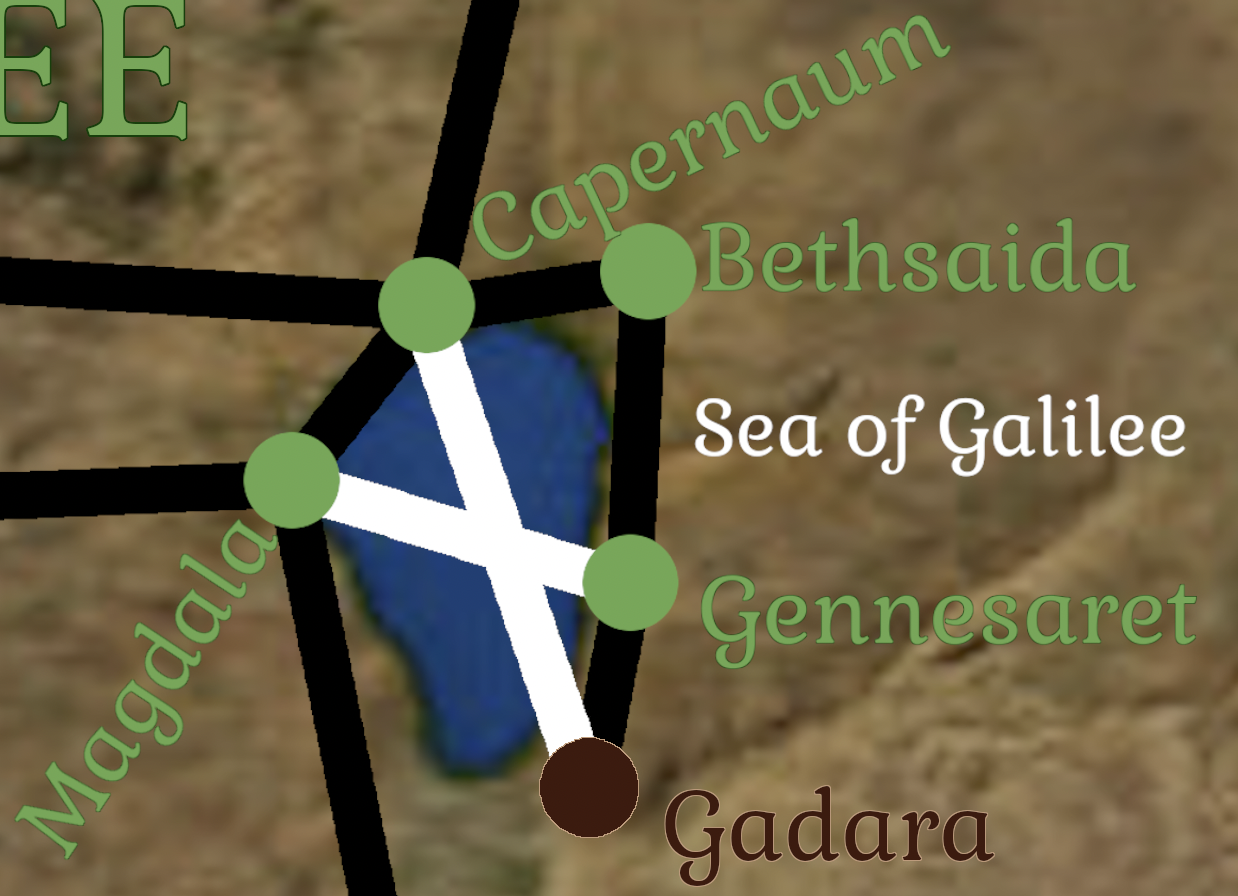In our last post, Jesus visited the Gentile (and wicked) region of Tyre of Sidon in the Roman province of Syria as reported in Mark 7 and Matthew 15. The account of his visit is brief and it appears that He and His disciples almost immediately returned to the area around the Sea of Galilee.
Again he departed from the borders of Tyre and Sidon, and came to the sea of Galilee, through the middle of the region of Decapolis. (Mark 7:31)
Specifically, Jesus was in the region known as the Decapolis. Decapolis literally means ten cities. Each of the cities in the Decapolis were Hellenized (Greek) city-states under the authority of Rome, but with a fair amount of autonomy.
There is some debate as to the specific cities and about the level of coordination between the cities. In 77 AD, Pliny the Elder, in his Natural History, listed ten cities of the Decapolis:
- Gerasa
- Dium
- Scythopolis (Beit She’an)
- Hippos
- Gadara
- Pella
- Philadelphia
- Canatha
- Raphana
- Damascus
The only one of these cities west of the Jordan is Scythopolis. Most of the rest are east of the river and south of the Sea of Galilee in what today is Jordan.
Philadelphia had previously been called Rabbath Ammon, the capital of Israel’s bitter enemies the Ammonites (e.g. 2 Samuel 11:1). Uriah the Hittite was killed at the gates of the citadel of this city to fulfill David’s murderous orders (2 Samuel 11:18-21). Today, this city is Amman, the capital of Jordan.
Damascus is the capital of modern day Syria and is known as the oldest capital in the world. Damascus is about 35 miles north-east of Caesarea Philippi.
To get a sense for how far this collection of 10 cities stretched, look at the map above. Damascus is about 25 miles east of the top-most red dot on the map. Philadelphia/Amman is about twice as far south of the Sea of Galilee as Pella.
In the verse above we read that Jesus came “through the middle of the region of Decapolis” “to the sea of Galilee”, so he must’ve stayed in Gentile territory, passing to the north and east of the Sea of Galilee.
The rest of Mark 7 describes what Jesus did in this region:
They brought to him one who was deaf and had an impediment in his speech. They begged him to lay his hand on him. 33 He took him aside from the multitude, privately, and put his fingers into his ears, and he spat, and touched his tongue. 34 Looking up to heaven, he sighed, and said to him, “Ephphatha!” that is, “Be opened!” 35 Immediately his ears were opened, and the impediment of his tongue was released, and he spoke clearly. 36 He commanded them that they should tell no one, but the more he commanded them, so much the more widely they proclaimed it. 37 They were astonished beyond measure, saying, “He has done all things well. He makes even the deaf hear, and the mute speak!” (Mark 7:32-37)
Although He continued to focus His ministry on His fellow Jewish countrymen (some of whom recognized Him as Messiah [Isaiah 35:5-6]), the good news was proclaimed widely, setting the stage for the Gospel’s and the church’s future spread to Gentile believers. Praise God!
—
The map at the top of this post is a snapshot of a portion of the gameboard for Journeys with Jesus.
If you’ve found this interesting and would like to continue to read these stories of the journeys and places in Journeys with Jesus, sign up in the sidebar to receive updates.
Note: all scripture quotes, unless otherwise noted, are from the World English Bible which is in the public domain.



